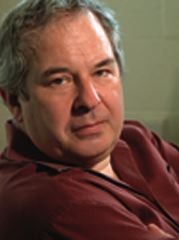Anthony Ladd, Ph.D.
Professor of Chemical Engineering
College of Engineering
2005 Awardee
 Tony Ladd, professor of chemical engineering, uses numerical simulations to develop an understanding of particulate transport in suspensions and porous media.
Tony Ladd, professor of chemical engineering, uses numerical simulations to develop an understanding of particulate transport in suspensions and porous media. By comparing the predictions of numerical simulations of a mathematical model with experimental measurements, we gain understanding of the underlying physical phenomena in situations where analytic theory is impossible, Ladd says.
“I was never particularly interested in applications per se, I’m much more interested in understanding how physics and nature work,” Ladd says.
Ladd’s research group studies the dynamics of suspended solid particles in a variety of flows and is currently supported by the National Aeronautics and Space Administration, the Department of Energy and the National Science Foundation.
The group has developed a numerical model for dissolution in fractured rocks utilizing first-principle simulations that take explicit account of the flow of fluid in a rough fracture, the transport of reactants and products, and the kinetics at the solid surfaces. The work relates to the “CO2 Sequestration Initiative,” which aims to reduce atmospheric CO2 by storing it in depleted oil and gas reservoirs, and has been supported by the U.S. Department of Energy.
“Our contribution is to the knowledge base and the understanding of complex systems rather than specific applications to specific products.”
His group has begun to investigate the dynamics of polymer solutions in order to build simulation tools to investigate the mechanical properties of cytoskeletal networks used to propel cells and bacteria and to investigate the dynamics of biopolymers in confined geometries.
“Anthony’s numerical simulations of particulate suspensions have greatly advanced the understanding of key aspects of solid-fluid interactions,” says Timothy J. Anderson, associate dean for research and graduate programs. “His research accomplishments clearly place him as a leader in his scientific discipline.”

